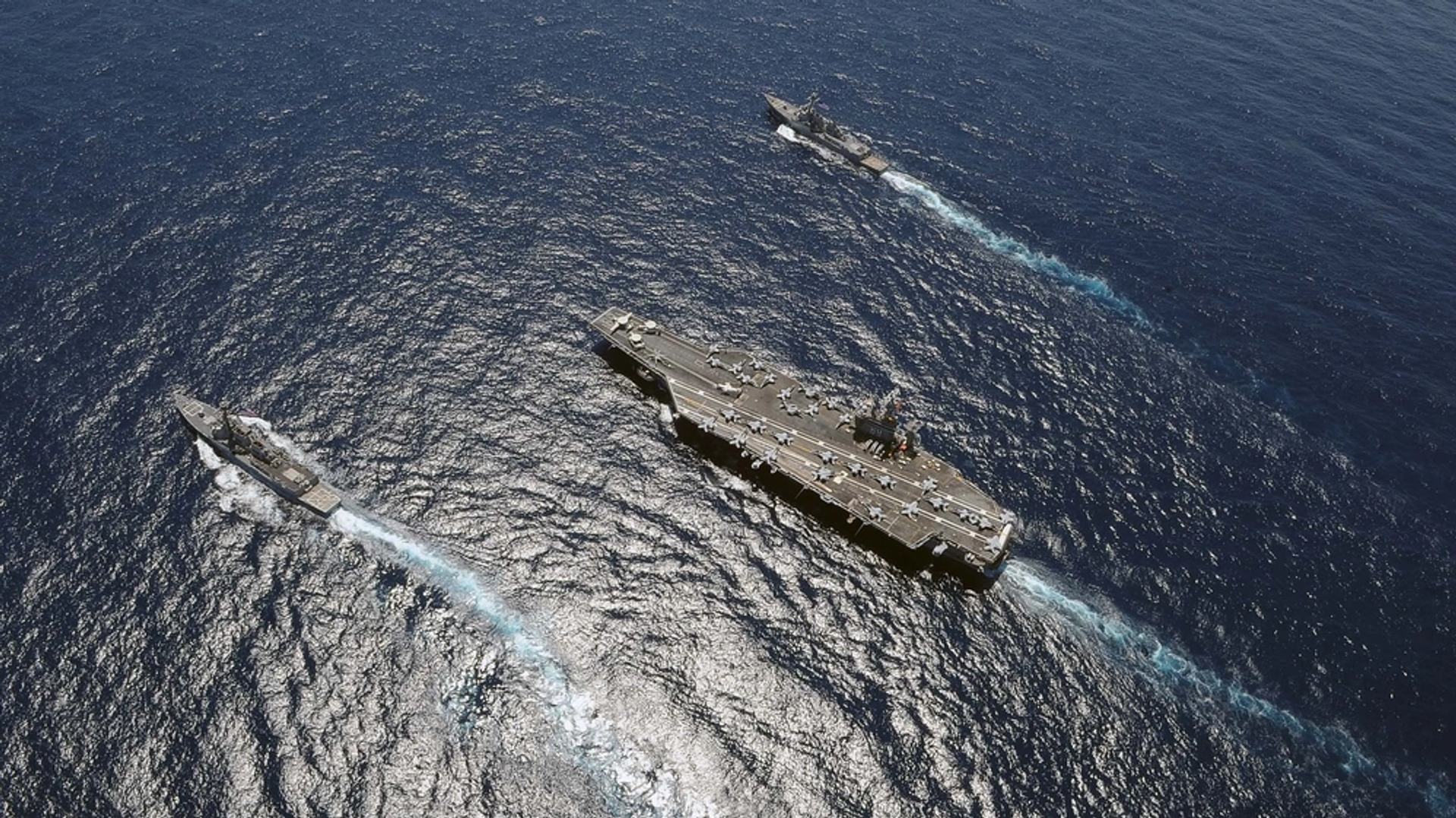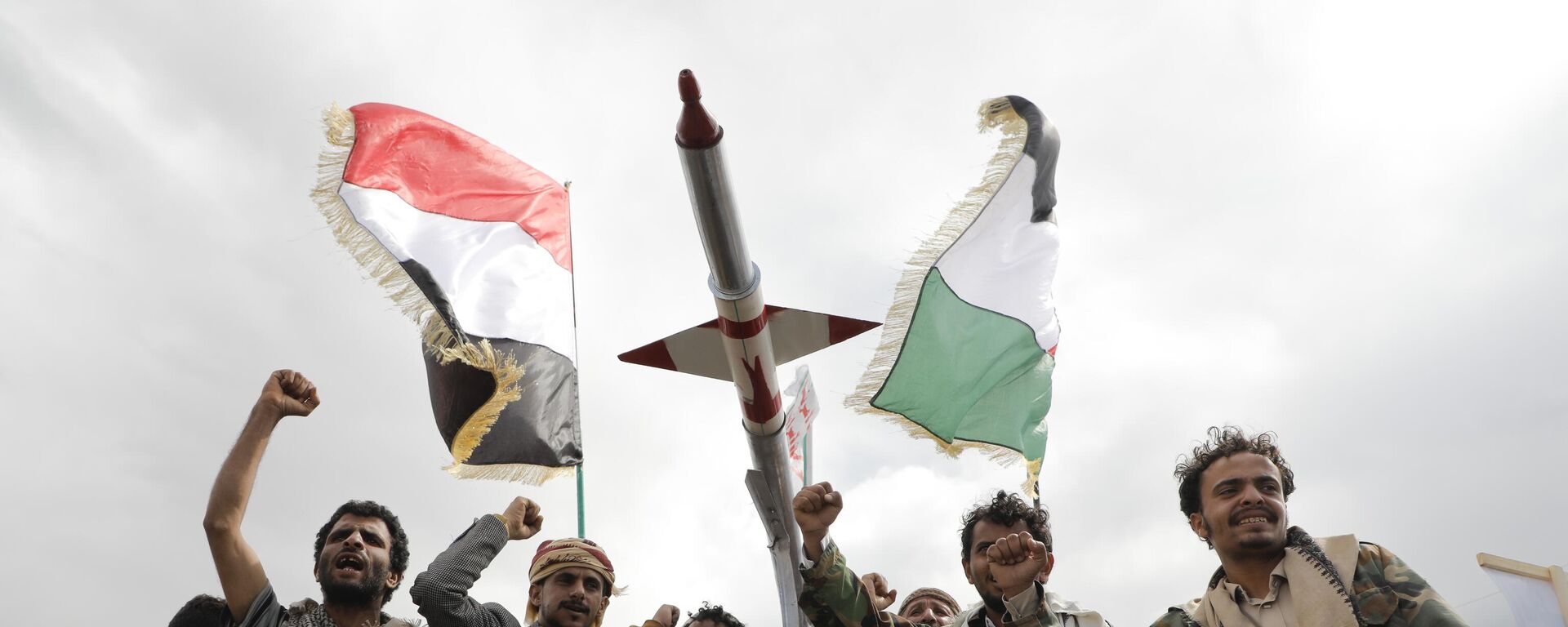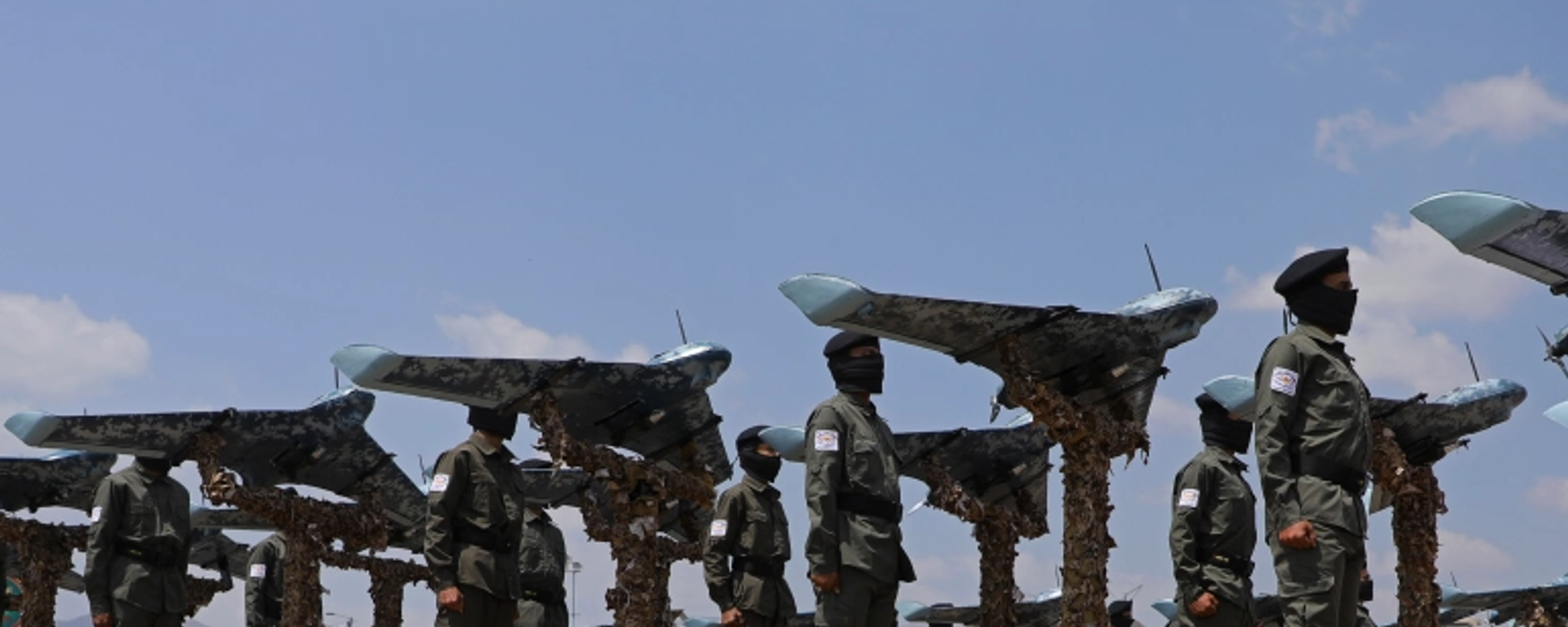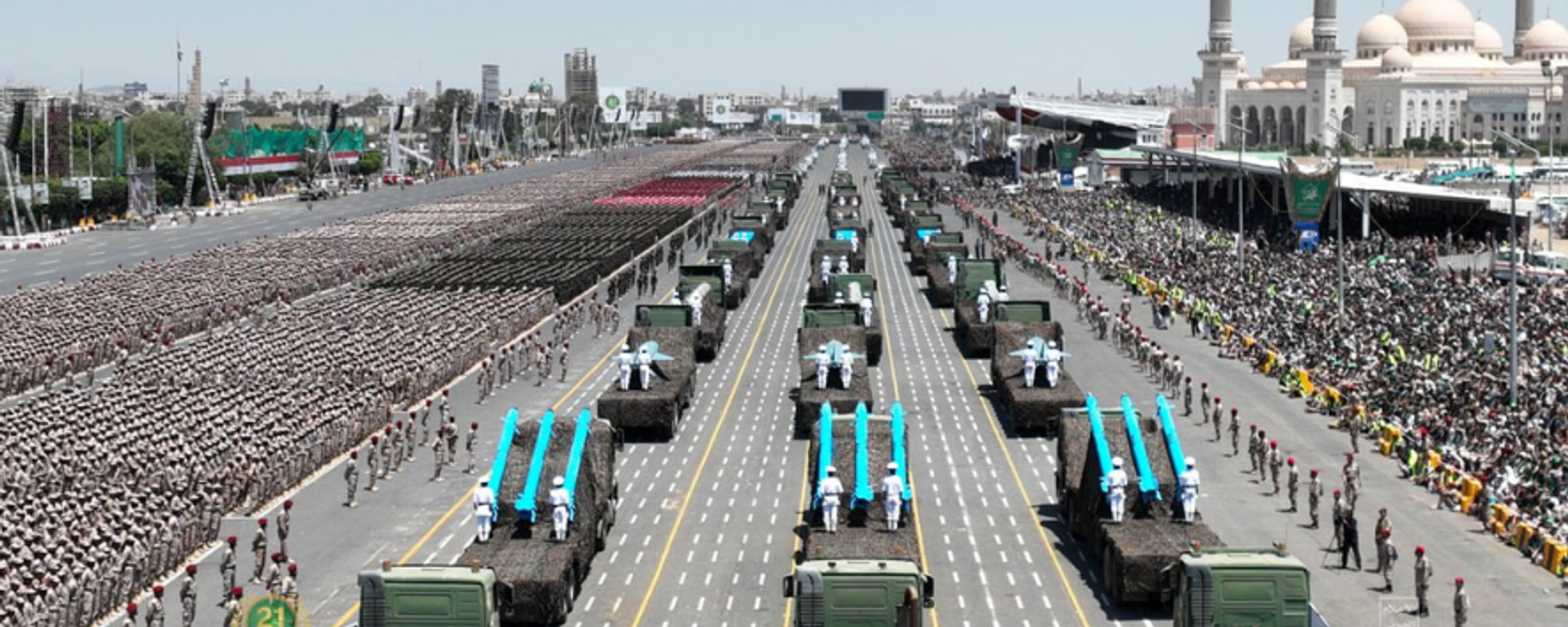https://sputnikglobe.com/20240727/us-navy-drops-details-on-pricey-missiles-and-bombs-its-using-against-yemens-warriors-1119534456.html
US Navy Drops Details on Pricey Missiles and Bombs It’s Using Against Defiant Houthis
US Navy Drops Details on Pricey Missiles and Bombs It’s Using Against Defiant Houthis
Sputnik International
F/A-18 Super Hornet fighter jets reportedly aboard the USS Dwight D. Eisenhower used the AIM-9X infrared-guided heat-seeking missile to target Houthi kamikaze drones.
2024-07-27T15:43+0000
2024-07-27T15:43+0000
2024-07-27T15:51+0000
military
military & intelligence
red sea
houthi
navy
us navy
uss dwight d. eisenhower
advanced anti-radiation guided missile (aargm)
air defense systems (manpads)
red sea crisis
https://cdn1.img.sputnikglobe.com/img/07e8/03/1b/1117586527_0:50:999:611_1920x0_80_0_0_d7d21e12aa77461827c1d9a9e84ce579.png
The US Navy has revealed new details about the weapons systems it has been using in the ongoing US-UK bombing campaign against the Houthis.According to information shared with the Navy Times, F/A-18 Super Hornet fighter jets aboard the USS Dwight D. Eisenhower, which left the Middle East and steamed home last month after a nine-month long deployment in the Red Sea area, used the AIM-9X infrared-guided heat-seeking missile to target Houthi kamikaze drones.The AIM-9X is a variant of Raytheon’s widely used AIM-9 Sidewinder short-range air-to-air missile. The weapon has a per unit price of between $430,800 and $472,000, making it between 215 and 236 times the cost of the estimated $2,000-each price of a Houthi attack drone.The Navy also confirmed the deployment of its Advanced Anti-Radiation Guided Missile, or AARGM, also launched from Super Hornets aircraft, against Houthi air defenses. Produced by Northrup Grumman, these ground attack weapons have a per missile price of $874,000.The Navy did not provide any details on the Houthi systems targeted by these weapons, The militia’s arsenal is thought to consist mostly of older Soviet-era SAMs and anti-aircraft guns, similarly dated radars, and Yemeni-built copies of Iranian missile and MANPADS designs.Another weapon used by the Super Hornets in their campaign is the AGM-154 Joint Standoff Weapon – a glide bomb possessed by the US Navy and Air Force and by the air forces of more than half a dozen of Washington’s allies. The Navy said the Raytheon-made missiles being used against the Houthis are the latest, AGM-154C variant, which cost roughly $719,000 each. The Navy did not specify what kinds of targets the munition was used to attack, but the inertial and GPS-guided, terminal infrared homing-equipped weapons are designed for use against both stationary ground targets and moving targets at sea.Apart from their machinegun-armed speedboats, the Houthis don’t have a navy to speak of, and their naval drones aren’t the fancy, $250,000 apiece, custom-built unmanned vehicles possessed by NATO countries. Instead, the militia has improvised by fitting ordinary speedboats with remote controls, packing them with explosives and launching them toward their enemies, with the total cost of such weapons not exceeding $30,000 (or about 24 times less than the US munitions deployed to dispatch them).The imbalance in pricing between the Houthis’ guerilla warfare-purposed weapons and the US’s sleek, arms expo showroom-class air-launched missiles and bombs parallels the chasm between the surface-to-air missiles the US Navy has been using and the Yemeni militia’s drones.In explosive testimony by US air and missile defense officials to Congress in May, Senate Armed Services Subcommittee on Strategic Forces Angus King lambasted the state of affairs in which the US military has been forced to use $4.3 million SM-6 interceptor missiles to take down $20,000 Houthi UAVs.US Navy expenditures on their policing mission in the Middle East beginning after October 7 and the start of the Israel-Gaza war have surpassed $1 billion, Navy Secretary Carlos Del Toro told the Senate Appropriations Committee in April.The US-led operation against the Houthis shows no sign of slowing down, but neither does the militia’s resolve against Washington and its allies. US Central Command announced on Friday that American forces had destroyed six Houthi aerial drones, and three uncrewed surface vessels, off the Yemeni coast. Also Friday, hundreds of thousands Yemenis gathered in the streets of Sanaa and other cities in solidarity with the Houthis’ operations against the US and Israel.France’s Le Monde newspaper wrote in a piece Friday that Western powers had proven “powerless to halt Houthi attacks,” with Western warships’ presence in the Red Sea and strikes on the militia said to have “failed to deter the rebel militia.”The glum attitude comes in the wake of reports in US business media last week that CENTCOM chief General Michael Erik Kurilla had written a letter to his boss, Lloyd Austin, and urged Washington to ramp up its economic, diplomatic and military pressure on the Houthis, admitting that the Western coalition’s operations to date had “failed” to stop the militia.
https://sputnikglobe.com/20240720/houthis-say-israeli-strike-on-yemens-port-will-not-remain-without-response-1119446084.html
https://sputnikglobe.com/20240720/israeli-us-media-warn-israel-has-no-defense-against-axis-of-resistance-drone-arsenal-1119443644.html
https://sputnikglobe.com/20240719/yemen-is-doing-what-gulf-states-should-have-1119436971.html
red sea
Sputnik International
feedback@sputniknews.com
+74956456601
MIA „Rossiya Segodnya“
2024
News
en_EN
Sputnik International
feedback@sputniknews.com
+74956456601
MIA „Rossiya Segodnya“
Sputnik International
feedback@sputniknews.com
+74956456601
MIA „Rossiya Segodnya“
what missiles has us used against houthis, how much has us spent fighting houthis
what missiles has us used against houthis, how much has us spent fighting houthis
US Navy Drops Details on Pricey Missiles and Bombs It’s Using Against Defiant Houthis
15:43 GMT 27.07.2024 (Updated: 15:51 GMT 27.07.2024) The US and Britain have been bombing Houthi-controlled areas of Yemen since January, killing and maiming scores of civilians and targeting hundreds of militia sites but failing to “degrade” the Houthis missile and drone capabilities, or to stop their months-long partial blockade of the Red Sea in support of Palestine.
The US Navy has revealed new details about the weapons systems it has been using in the ongoing US-UK bombing campaign against the Houthis.
According to information shared with the Navy Times, F/A-18 Super Hornet fighter jets aboard the USS Dwight D. Eisenhower, which left the Middle East and steamed home last month after a nine-month long deployment in the Red Sea area, used the AIM-9X infrared-guided heat-seeking missile to target Houthi kamikaze drones.
The AIM-9X is a variant of Raytheon’s widely used
AIM-9 Sidewinder short-range air-to-air missile. The weapon has a per unit price of between
$430,800 and $472,000, making it between 215 and 236 times the cost of the estimated
$2,000-each price of a Houthi attack drone.
The Navy also confirmed the deployment of its
Advanced Anti-Radiation Guided Missile, or AARGM, also launched from Super Hornets aircraft, against Houthi air defenses. Produced by Northrup Grumman, these ground attack weapons have a per missile
price of
$874,000.
The Navy did not provide any details on the Houthi systems targeted by these weapons, The militia’s arsenal is thought to consist mostly of
older Soviet-era SAMs and anti-aircraft guns, similarly dated radars, and Yemeni-built copies of Iranian missile and MANPADS designs.
Another weapon used by the Super Hornets in their campaign is the AGM-154 Joint Standoff Weapon – a glide bomb possessed by the US Navy and Air Force and by the air forces of more than half a dozen of Washington’s allies. The Navy said the Raytheon-made missiles being used against the Houthis are the latest, AGM-154C variant, which cost roughly $719,000 each. The Navy did not specify what kinds of targets the munition was used to attack, but the inertial and GPS-guided, terminal infrared homing-equipped weapons are designed for use against both stationary ground targets and moving targets at sea.
Apart from their machinegun-armed speedboats, the Houthis don’t have a navy to speak of, and their naval drones aren’t the fancy,
$250,000 apiece, custom-built unmanned vehicles possessed by NATO countries. Instead, the militia has improvised by
fitting ordinary speedboats with remote controls, packing them with explosives and launching them toward their enemies, with the total cost of such weapons not exceeding
$30,000 (or about 24 times less than the US munitions deployed to dispatch them).
The imbalance in pricing between the Houthis’ guerilla warfare-purposed weapons and the US’s sleek, arms expo showroom-class air-launched missiles and bombs parallels the chasm between the surface-to-air missiles the US Navy has been using and the Yemeni militia’s drones.
In explosive testimony by US air and missile defense officials to Congress in May, Senate Armed Services Subcommittee on Strategic Forces Angus King lambasted the state of affairs in which the US military has been forced to use $4.3 million SM-6 interceptor missiles to take down $20,000 Houthi UAVs.
“In the Red Sea, the Houthis are sending $20,000 drones and we’re shooting them down with missiles that cost $4.3 million. The math doesn’t work on that, gentlemen. It just doesn’t work. What are we thinking?” King
asked. The lawmaker urged the Pentagon to urgently ramp up the development of directed energy weapons instead.
US Navy expenditures on their policing mission in the Middle East beginning after October 7 and the start of the Israel-Gaza war have surpassed
$1 billion, Navy Secretary Carlos Del Toro told the Senate Appropriations Committee in April.
The US-led operation against the Houthis shows no sign of slowing down, but neither does the militia’s resolve against Washington and its allies. US Central Command
announced on Friday that American forces had destroyed six Houthi aerial drones, and three uncrewed surface vessels, off the Yemeni coast. Also Friday, hundreds of thousands Yemenis
gathered in the streets of Sanaa and other cities in solidarity with the Houthis’ operations against the US and Israel.
France’s Le Monde newspaper
wrote in a piece Friday that Western powers had proven “powerless to halt Houthi attacks,” with Western warships’ presence in the Red Sea and strikes on the militia said to have “failed to deter the rebel militia.”
The glum attitude comes in the wake of reports in US business media
last week that CENTCOM chief General Michael Erik Kurilla had written a letter to his boss, Lloyd Austin, and urged Washington to ramp up its economic, diplomatic and military pressure on the Houthis, admitting that the Western coalition’s operations to date had “failed” to stop the militia.





